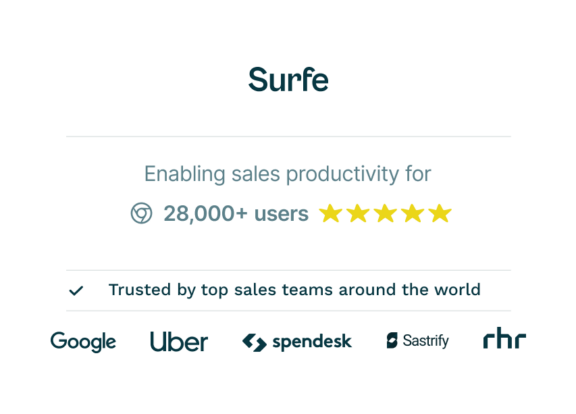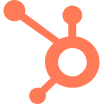How to Set Up a Sales Cadence That Increases Response Rates
Imagine being the passenger of a car.
Now imagine this car’s being driven through a city with no traffic lights. One minute it’s speeding ahead, the next it’s stopping suddenly – and are you even allowed to be driving down this road?!
Not exactly a fun experience, right?
Well, that out-of-control feeling is what your prospects experience when you reach out without following a cadence. Put yourself in their shoes for a minute – they’re getting hammered with touch-points one minute, hearing crickets the next, and they’re not even sure where you’re going with any of your messages.
You can think of sales cadences as the traffic lights of this example. Follow a cadence, and you know exactly when to slow down, when to go, and where you’re heading. Your prospect feels much more relaxed – and, crucially, much more trusting. They even start to enjoy the ride.
The result? You’ll see increased response and engagement rates – and generate up to 50% more sales-ready leads. If you fancy a bit of that (err, who doesn’t?), keep reading:
- What is a Sales Cadence?
- What Makes a Good Sales Cadence?
- Tools You Need to Implement Your Sales Cadence
- How To Make Sure Cadences Impact Your Response Rates
Green light – time to get going!
What is a Sales Cadence?
A sales cadence is a pre-defined series of touch-points used to engage prospects over time. These touch-points might be over:
- Phone call
- LinkedIn interaction
- Voicemail
- Social media messages
They help sales pros like us to be consistent with our outreach, without accidentally overdoing it and freaking out the prospect. Consistency is important – it takes on average 8 touches to reach a prospect, so you’re unlikely to outperform your peers without a structured cadence.
Ok, we now know why we need one – but not all sales cadences are created equal. Let’s find out why:
What Makes a Good Sales Cadence?
We’re always going to sing the praises of a multi-touch, multi-channel cadence. Combine your channels, and you’ll increase the likelihood of reaching prospects where they are.
Think about it: some people might like to keep in touch on a social media platform, while some might prefer a good old-fashioned phonecall. Some people like to receive emails to read at their own pace, while others might prefer to get on the phone to keep things efficient.
By working multiple channels, you’re making sure you don’t accidentally go ham on phone calls when your prospects’ more of an email person or vice versa.
It’s also a great way to keep things interesting – your prospect’s far more likely to double-take at a social post if they’ve already seen your name in their inbox, whereas seeing your name in their inbox for the 10th time in a row would probably cause their eyes to glaze over.
Employ a multi-touch, multi-channel sales strategy, and you’ll see higher engagement rates and conversion rates, and a lead nurturing process that feels non-cringe and natural.
Sample Sales Cadence Strategy
Let’s take a look at what a multi-touch, multi-channel cadence looks like in practice.
- Day 1: Send a LinkedIn connection request; like two of their posts.
- Day 2: Comment on one of their recent LinkedIn posts.
- Day 3: Send a LinkedIn message discussing relevant content (no sales pitch yet).
- Day 4: Make a cold call; leave a voicemail if unanswered; follow up with an email.
- Day 5: Send a follow-up email with resources.
- Day 6: Propose a meeting time in an email, focusing on a specific pain point you’ve identified.
The exact process will be different for each business – but generally speaking, make sure to double touch on the first day to cement your name in their heads. Oh, and give them a bit of breathing space – you’re going for ‘present’ not ‘following their every move.’
Tools You Need to Implement Your Sales Cadence
Back in the olden days, the humble sales professional might have had to handle a sales cadence all by themselves. Fortunately for us, we’re not in the olden days anymore – there are plenty of tools out there to make the process as streamlined as possible:
CRM Platforms
We’re sure your CRM platform feels like an extension of your arm already – 57% of sales pros spend over 3 hours a week on their CRM of choice. Use your CRM well, and it can boost performance by up to 34%.
But what does using it well mean? We’ve got you. Basically, the more seamlessly it fits into your day-to-day, the better. For example, if you use Surfe (oh hey!), you can connect your CRM to LinkedIn, and share data between the two in just one click. This speeds up the prospecting process and reduces room for manual error. See what we mean?
Sales Engagement Platforms
Tools like Outreach and Salesloft should also be part of your repertoire. Automate your multi-channel touch-points where you can, and you’ll become a lot faster and more efficient at working your way through them. They’re also helpful when it comes to looking at the big picture and tracking the performance of your cadence as a whole.
Tip: you can add contacts to these tools directly from LinkedIn using Surfe too. Three cheers for integrated tech stacks!
Data Enrichment Tools
It goes without saying that the best sales cadence is super personalized. The more data you have, the more you’ll be able to personalize your messaging and approach.
A good lead enrichment tool can be a godsend here – we’d recommend, shock, Surfe for its up-to-date, validated contact data, technographics, and competitor insights. Transfer these data points over to your CRM in just one click, and wow your prospects with your personalization skills.

How To Make Sure Cadences Impact Your Response Rates
Let’s take a look at how you can build on the results your cadences get:
Iterative Improvement
First things first, it’s important to note that your first cadence may not get you the response rates you want. Nobody’s going to knock it out the park on their first go (unless they get really, really lucky) – it’s the refinement over time that’s really going to increase effectiveness.
Keep an eye on the data and tailor your cadence accordingly to improve relevance and engagement.
Leveraging Data
Data is your best friend when it comes to improving response rates. Enriched data can give you insights to base your messaging on. For example:
- If a prospect uses a competitor’s tool, you can start talking about the area that tool’s weaker in)
- Or if you see a prospect uses multiple tools, you can talk about how your solution consolidates those results to save costs and increase efficiency
Clever, right?
Let’s Wrap It Up!
RED LIGHT!
Let’s stop for a moment and reflect on how far you’ve come reading this blog post. By now, you should understand exactly what you have to do to build a cadence that gets you the responses you need, which tools are going to help you on the journey, and how you can build on initial results.
Time to let those interested leads start rolling in. Take your foot off the brakes – time to go!

Start revving your engine…
All you need is Surfe, and you’re good to go. Try it today (believe it or not, it’s free!).
FAQs About Setting Up A Sales Cadence That Increases Response Rates
What Is a Sales Cadence and Why Is It Important?
A sales cadence is a structured sequence of outreach touchpoints designed to engage prospects consistently over time. These touchpoints may include emails, calls, LinkedIn messages, and voicemail.
Why is it important? It keeps your outreach organized, ensuring you don’t overwhelm or neglect your prospects. Prospects often need multiple touchpoints – research says it takes about eight on average to engage effectively. By sticking to a cadence, you provide clarity and consistency. In turn, this builds trust and increases the likelihood of a response.
Think of a sales cadence as a roadmap for your sales process – it keeps you and your prospects on track, making sure every interaction adds value and leads closer to a sale.
What Makes a Good Sales Cadence?
A good sales cadence uses a mix of channels (like email, phone, LinkedIn, and social media) and varied touchpoints. This multi-channel, multi-touch approach ensures you meet prospects where they’re most comfortable.
It’s also about balance. For example, avoid bombarding prospects with emails; instead, spread outreach across different channels. Personalization is key too – tailor your messages to your prospects’ preferences and pain points.
The result? Higher engagement, less resistance, and a more natural, non-intrusive approach to nurturing leads. A well-structured cadence keeps your prospects interested without feeling like they’re being chased.
How Many Touchpoints Should a Sales Cadence Include?
A typical sales cadence involves 8-12 touchpoints spread across 10-14 days. However, the exact number can vary based on your unique business and prospects.
Start with double touches on day one – like sending a LinkedIn connection request and liking a prospect’s post. Then, alternate touchpoints like emails, calls, and social media interactions. Remember to leave enough time between touches to avoid overwhelming your prospect.
The goal isn’t just quantity but quality. A well-timed, thoughtful series of touchpoints shows professionalism and helps prospects stay engaged.
How Can I Measure the Success of My Sales Cadence?
To measure success, track metrics like response rates, conversion rates, and the quality of leads generated. Use tools like CRM platforms or sales engagement software to gather and analyze data.
Look for patterns: are prospects responding more to certain touchpoints or channels? Use these insights to refine your cadence over time. For example, if you notice a higher response rate to LinkedIn messages, prioritize this channel in your strategy.
Iterative improvements based on data will help you maximize the impact of your cadence and ensure sustained success.
What Tools Do I Need to Build and Manage a Sales Cadence?
Effective sales cadences require tools that streamline outreach and improve efficiency. Consider:
- CRM Platforms: for tracking interactions and storing prospect data. Tools like Surfe integrate CRM with LinkedIn for super-seamless prospecting.
- Sales Engagement Tools: platforms like Outreach or Salesloft help automate touchpoints and track performance.
- Data Enrichment Tools: Use tools like Surfe to personalize your cadence with accurate contact data and insights.
With the right tools, you’ll save time, avoid errors, and deliver more impactful outreach.
How Can I Personalize My Sales Cadence to Increase Response Rates?
Personalization is all about tailoring your messaging to resonate with prospects. Start by using enriched data to understand their pain points, goals, and preferences.
For instance, if a prospect uses a competitor’s tool, highlight how your solution addresses a known gap. Or, if they rely on multiple tools, focus on how your offering consolidates processes for efficiency.
Personalized cadences show prospects you’ve done your homework and aren’t just sending generic messages. This approach builds trust and significantly boosts response rates.









